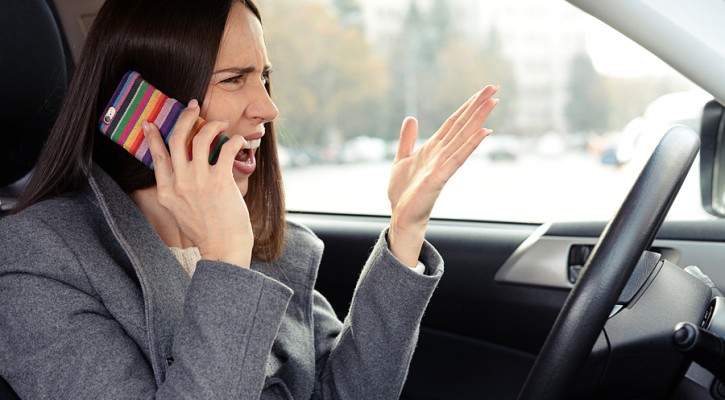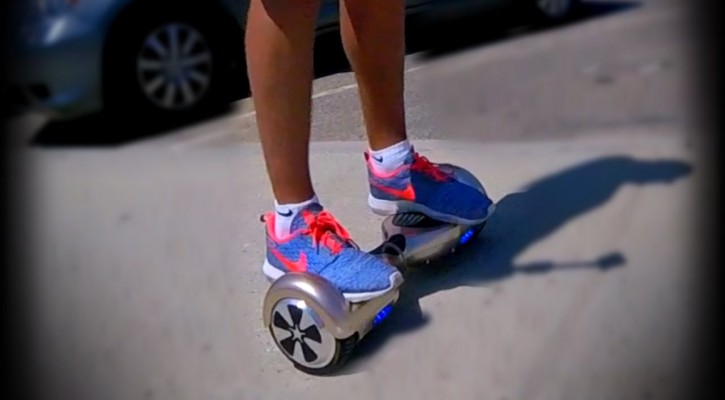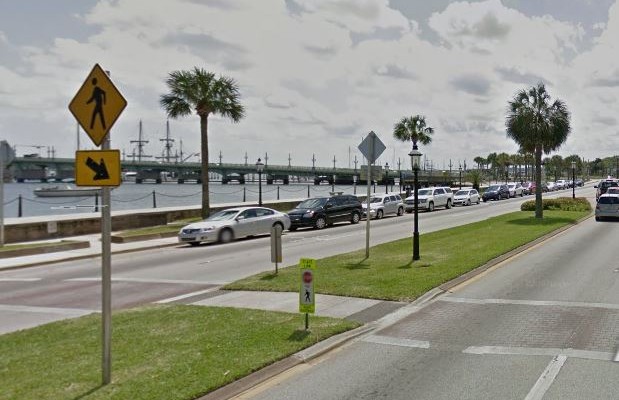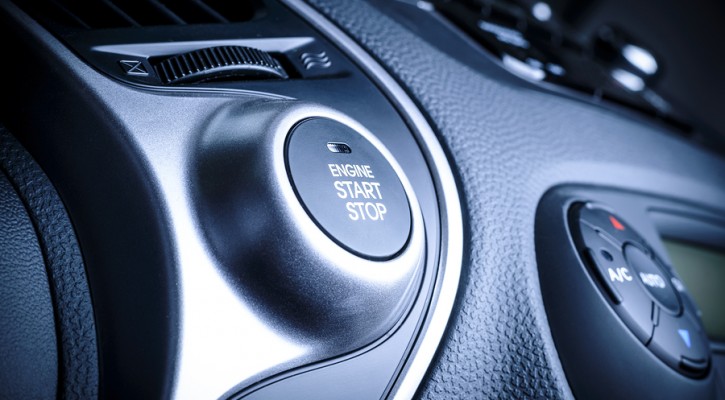
Strong Emotions Increase Crash Rate Tenfold
February 26, 2016
In 2006, the Virginia Tech Transportation Institute (VTTI) along with the National Highway Traffic Safety Administration (NHTSA) conducted a natural driving behavior study by outfitting 100 cars with sensors and cameras that observed both the driver and events outside the vehicle. Recently, VTTI added to that original study by conducting the largest study of its kind. In the latest study, VTTI followed more than 3,500 participants across six points in the US. The results showed that driver emotions are just as, if not more dangerous than driver distractions.
In the first study, the subject vehicles logged nearly two million miles and were involved in 761 near crashes and 82 actual crashes. The results showed that almost 80 percent of motor vehicle crashes and 65% of near crashes involve driver inattention within three seconds before the event.
In the second study, VTTI again outfitted driver’s personal vehicles with unobtrusive instrumentation, including a suite of cameras, sensors, and radar. The instruments continuously recorded real-world driver performance and behavior, from the time the drivers turned on the ignition to the time they turned the engine off. The drivers participated between one and two years each and accumulated more than 35 million miles of observable data.
Unlike the first study that looked at events and driver behaviors that led to both near and actual crashes, the second study only collected data on 1,600 actual crashes ranging in severity from low, such as striking the curb, to severe, police-reportable crashes.
Driving experts have known for years that driver emotions and attitude have the greatest impact on driving safety. This study was able to see that relationship in greater detail. According to the researchers, “drivers increase their crash risk nearly tenfold when they get behind the wheel while observably angry, sad, crying, or emotionally agitated.”
Where distracted driving is concerned, the researchers found that:
- Drivers engage in some type of distracting activity more than 50 percent of the time they are driving.
- Crash rates are doubled when drivers engage in distracting activities that require them to take their eyes off the road, such as using a handheld cell phone, reading or writing, or using touchscreen menus on a vehicle instrument panel.
It all comes down to basics; drive the car instead of letting your emotions drive you and avoid distracting behaviors at all costs.
To learn more read: Researchers determine driver risks using large-scale, crash-only naturalistic database

The Dangers Of Hoverboards
January 29, 2016
A week or so ago, as I was driving through my neighborhood, I came up on three kids riding hoverboards in the oncoming lane. The two boys and a girl, who looked to be around 13 years old, were moving along at a pretty good clip. The girl never took her eyes off of her cell phone while she was in my view. I thought, “here’s a crash waiting to happen.”
Hoverboards were the big gift item of the 2015 Christmas season and apparently sold like hotcakes. Just before Christmas, news reports started appearing showing hoverboard batteries that had caught fire and exploded; destroying at least one home in Louisiana. The fires are happening so often that a lot of college campuses banned hoverboards in their dorms.
While the fires are a legitimate cause for concern, a problem we aren’t hearing a lot about is the potential for serious injury among hoverboard users, especially if they take them on the road.
A statement published this week by the chairman of the Consumer Products Safety Commission (CPSC) addressed both the problems of the battery fires and the potential for serious injury by hoverboard users.
At least two teens – one in England and one in Dubai – died when they were thrown from their hoverboards into oncoming traffic. While the CPSC has started collecting data on hoverboard injuries and emergency room (ER) visits, it’s still too early to see if any trends are developing. The only similar activity is skateboarding which leads to an average of 111,000 ER visits by kids under the age of 18 each year. While many of those visits involve sprains, scrapes, and bruises, a significant number also involve traumatic brain injury. In 2014, 28 people were killed in skateboarding related crashes.
One major difference between skateboards and hoverboards is that, unlike skateboards, hoverboards can accelerate on their own depending on the weight and body positioning of the user. New users will have a steep learning curve before they can have total control over the boards.
After a teen in England was killed using a hoverboard, police were quick to remind people that, in the minds of the law, hoverboards are basically Segways without handles and the use of Segways on public property of any kind is illegal. In the US, the technology is so new that most states don’t have laws to cover them yet.
In Florida, if hoverboards are considered to be the same as a Segway without handlebars, they would fall under the law regarding “electric personal assistive mobility devices (EPADs)” and are allowed:
(a) On a road or street where the posted speed limit is 25 miles per hour or less.
(b) On a marked bicycle path.
(c) On any street or road where bicycles are permitted.
(d) At an intersection, to cross a road or street even if the road or street has a posted speed limit of more than 25 miles per hour.
However, if the hoverboard user is under the age of 16, they must wear a bicycle helmet that meets the standards of:
- the American National Standards Institute (ANSI Z Bicycle Helmet Standards);
- the standards of the Snell Memorial Foundation (1984 Standard for Protective Headgear for Use in Bicycling);
- or any other nationally recognized standards for bicycle helmets which are adopted by the department.
Counties, cities and towns can make regulations regarding EPADs and the Department of Transportation can ban their use on roads where they might otherwise be used if it’s felt that the regulations or bans are in the interest of safety.
Children who use hoverboards should:
- Always wear protective equipment such as helmets and knee and elbow pads.
- Always be supervised when riding.
- Restrict their riding to sidewalks and stay out of traffic.
Owners of hoverboards should:
- Never leave the hoverboard to charge overnight without supervision. The charging process increases the risk of a fire.
- Keep a fire extinguisher near the hoverboard charging station.
For additional hoverboard safety recommendations, visit: Statement from the U.S. CPSC Chairman Elliot F. Kaye on the Safety of Hoverboards

Ask The Traffic School Instructor: Do Pedestrians Always Have The Right-Of-Way?
January 13, 2016
Question: I was attending a work related safety training session and the instructor said that, in Florida, pedestrians don’t have the right of way. Is that true?
Answer: For the most part, no, it isn’t true but it depends on the circumstances.
First off, we have to look at the term “right-of-way.” There’s a lot of confusion about that term and people tend to think in terms of who has the right-of-way in a given situation when, in fact, no one has the right-of-way. The law doesn’t give anyone the right-of-way; it only says who should give up or yield the right-of-way to another. You can’t take the right-of-way, you can only give it to someone else and the law lists the circumstances in which a driver should give up the right-of-way to another.
Let’s look first at what the law requires of pedestrians:
- On roadways where there’s a sidewalk, pedestrians must stay off the paved portion of the roadway reserved for vehicles.
- If there’s no sidewalk, pedestrians are required to walk on the shoulder on the left side of the road facing oncoming traffic.
- Pedestrians are only allowed to cross the roadway at a marked crosswalk or at an unmarked crosswalk at an intersection. (Even if it’s not marked, the area next to an intersection is considered to be a crosswalk.)
- Pedestrians are required to obey all traffic signals and signs just like drivers.
- Even if they’re crossing at a marked or unmarked crosswalk, pedestrians are required to give up the right-of-way if a vehicle is approaching so closely that it wouldn’t be possible for it to safely stop in time.
Now let’s look at those times when drivers are required to give up the right-of-way to pedestrians:
- Drivers are required to yield the right-of-way by slowing or stopping, if necessary, when a pedestrian is crossing the street in a marked or unmarked crosswalk.
- If a pedestrian is crossing the street at a crosswalk and is on the driver’s side of the road or will be on the driver’s side of the road by the time the driver gets there, the driver is required to slow and stop, if necessary, for the pedestrian to pass.
- On a multi-lane roadway, if a driver ahead has stopped for a pedestrian in the crosswalk, drivers approaching in the other lanes must also stop until the pedestrian has safely crossed.
- When a driver is entering the roadway from a parking lot, driveway, or alley, the driver must yield to pedestrians on the sidewalk before proceeding.
- When turning a corner, drivers must yield to pedestrians who are already in the crosswalk.
Special circumstances:
If a blind or visually impaired pedestrian, using a white cane or guided by a guide dog, is attempting to cross the street, whether at a crosswalk or not, all traffic in both directions must come to a complete stop.
Watch for children:
Watch out for children, especially near schools, parks, and residential zones. Kids are in their own little world and they don’t care what the law says.
Vulnerable road users
A new law went into effect in Florida a couple of years ago that lists those who are regarded as vulnerable road users. Vulnerable road users include:
- Pedestrians, including those working on the roadway
- Users of bicycles, mopeds, or scooters
- Skaters and skateboarders
- Horse drawn carriages
- Motorcyclists
- Someone riding an animal
- Users of electric mobility assistance devices
- Users of wheelchairs
- Tractors or other vehicles designed for farm use
The new law requires motorists who are involved in a crash with a vulnerable road user to stop and render aid. Those who fail to do so will face severe penalties.
The lists above don’t include every instance covered under the law, just the basic ones. To see what Florida law says about pedestrians, read: The 2015 Florida Statutes – 316.130 Pedestrians; traffic regulations.—

Keyless Ignitions Pose Hazards For Users
January 11, 2016
Keyless ignitions can be a convenience for drivers but, in some cases, they’re proving to be deadly and vehicle owners and safety organizations are pressuring the federal government to address the issue.
With keyless ignitions or “smart keys,” drivers don’t have to take the key fob out of their pocket or purse to start the vehicle; as long as the smart key is in the vehicle, the driver can push the start button and start the car. The problem comes when shutting off the vehicle.
For the past several years, the National Highway Traffic Safety Administration (NHTSA) has received multiple complaints from vehicle owners regarding issues with the keyless ignitions:
No shut off
Some drivers have been unable to shut off the vehicle in on-road emergency situations.
Shut off in gear
Some drivers inadvertently shut off the engine without first putting the transmission in “park” allowing the vehicle to roll away.
Vehicle didn’t shut off
Some drivers placed their vehicle in park but inadvertently left the engine running. When a vehicle is left running inside a garage, poisonous carbon monoxide can quickly build up and spread throughout the home. At least 18 people have died from carbon monoxide poisoning under these circumstances.
How do you not know the engine is still running?
For those who wonder how can someone not notice that the engine is still running, hybrid vehicles such as the Toyota Prius are silent when running on battery power alone. When a vehicle is left running in a garage, the gasoline motor will turn on periodically to recharge the battery. This cycle will continue (while pumping out poisonous carbon monoxide gas) until the vehicle runs out of gas.
The fix?
NHTSA has proposed adding an audible alarm to remind drivers that the vehicle is still running when the doors are opened. This fix may work for some but, for the deaf or hard of hearing driver, the alarm will be useless.
Consumer and safety organizations are pushing for regulations that will require the manufacturers to add a feature to shut off the engine if the vehicle has been idling for more than a half hour. According to experts, this fix will only require a computer update that can be accomplished quickly and at very little cost.
What should the owner do?
While manufacturers and the federal government sort out who is responsible and what sort of fix should be necessary, owners of vehicles with keyless ignitions should be aware of the hazards and remember to place the vehicle in park and shut off the vehicle using the off button. If necessary, some sort of visual reminder such as a post-it note on the dash might be helpful. Owners of keyless ignitions should also consider installing one or more carbon monoxide detectors in their homes.

Night Shift Workers At High Risk Driving Home
December 29, 2015
Night shift workers are at greater risk of a crash when driving home from work than day shift workers according to new research conducted by Brigham and Women’s (B&W) Hospital in Boston. The study’s results were published this month in the Proceedings of the National Academy of Sciences.
It has long been known that shift workers, especially those whose shifts rotate between day and night are at greater risk for health problems, including heart attacks. The researchers at B&W felt that night shift workers might suffer a greater risk of involvement in a motor vehicle crash because, no matter how long they had worked the night shift, their natural circadian rhythms were disrupted, preventing them from getting adequate sleep.
Driving drowsy is a major problem among American drivers. According to an American Automobile Association (AAA) study published last year, approximately 6,400 people are killed in 328,000 crashes per year due to drowsy driving. According to the AAA study, drowsy driving was responsible for 21 percent of crashes in which a person was killed and 13 percent of crashes in which a person was hospitalized.
To conduct the research, the researchers recruited night shift workers to drive over a two hour period during daytime immediately following their night shift. The same workers were tested again after getting an adequate night’s sleep. The tests were conducted on a closed test track at the Liberty Mutual Research Institute for Safety.
- During the tests conducted after a night shift, track safety observers had to step in and use emergency braking procedures to prevent a crash in 37.5 percent or one-third of the test drives.
- In 43.8 percent of the test drives, safety observers had to halt the drive prematurely because the test subjects were too sleepy to maintain adequate control of their vehicle.
- Episodes of microsleep (nodding off for three or more seconds) increased with each half hour of the drive.
- Instead of making multiple small-scale steering corrections, subjects made infrequent large-scale steering maneuvers to avoid crossing over into other lanes.
- When tests were conducted after subjects had slept all night, there were no emergency braking interventions or test terminations by the safety observers.
Most of the near crashes and inability to maintain control happened after more than 45 minutes into the two hour drive. The researchers realized that that was a long time but noted that many night shift workers routinely commute more than an hour each way to and from work.
The researchers felt that the safest way to resolve the problem is for employers to provide transportation from the workplace to a central area where night shift workers can get public transportation for the remainder of the trip home.
Read more: High drowsy driving crash risk on daytime commute after night work
